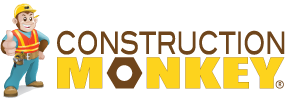When managers in construction start beating the drum of more production, the message that is typically received from the crews is “you need to be working harder”. While this may be true in some instances, most of the time this is not what is being said. In construction, especially for subcontractors that are performing the labor, money is made or lost in the amount of work being put in per hour charged to the job (productivity). The more money made results in profits, bonuses, better pay, and additional work for the company and its employees.
Working “harder” could yield some modest gains in the drive for better productivity; however, those gains will be temporary and could come with many unintended consequences. Most workers are moving and working at a reasonable pace. Yes, they could be moving faster, but just like a runner, sprinting will only require you to slow down later in the race to catch your breath. Construction projects are a marathon and at some points in a project a sprint may be needed, but it is unreasonable to expect everyone to sprint for the entire race.
Focus on Work Process
The better way to improve productivity is to focus on the work process. Managers, companies, and workers who want better productivity are not really concerned with the amount of sweat pouring out of one’s hard hat, they care about the quantity of quality work being done per hour of cost. When I mention work process, I am referring to the entire process from planning, material staging, resource allocation, work installation, and quality control of a given installation. This is where productivity can be won or lost.
Let’s look at an example where a crew of two are installing tile in a kitchen area. Because of previous job requirements, the tile was put on pallets in a staging area that is 100 feet from the work area. The crew was not provided a pallet jack, and thus they make the trip from the work area to the staging area about every 20 minutes to retrieve another box of tiles to install. If focus was placed on the work process, the entire pallet would be moved adjacent to the work area in the morning, saving at least an hour of labor from the multiple trips made throughout the day. This hour can then be spent installing tile in lieu of moving back and forth.
In another common example, two people are assigned to hang light fixtures in a grid ceiling. In lieu of working independently, they work together. One person is charged with retrieving the fixture and delivering to the other and then the second person puts it in the grid ceiling. As you can imagine, there is waiting time for the both workers while the other completes their task. This waiting time is lost production, and if each person worked independently, productivity could be increased by as much as 100% without either person “sprinting”.
How Do You Analyze Work Process
Any good process analysis has four common steps:
- Plan
- Execute
- Analyze
- React
Be sure you are planning your work. In planning you should be determining the number of workers, how the work should be placed, if all of the material is there, if the work area is ready for you, the goals to be achieved in a day, and what tools will be required to best succeed at the plan.
Go ahead and execute the plan, while ensuring that you are collecting data on how you are performing. Executing plans without gathering proper metrics and measurements will not allow you to improve your performance.
Analyze the data that was collected while executing your plan. Did you meet the goals that were set? What happened that you didn’t expect? How could the plan be changed to make for different outcomes?
React to the analysis. If you encountered problems with the tools, provide different tools. If productivity was 80% of expected, maybe you need to experiment with different materials, steps, or crew mixes. Remember that doing the same thing over and over expecting different results is just insane.
Summary
While hard work is a key element to good construction, productivity is not driven by it. Most workers are working hard and for that reason working smarter is the key to productivity. You can only achieve smarter work by managing the system that is your work product.
